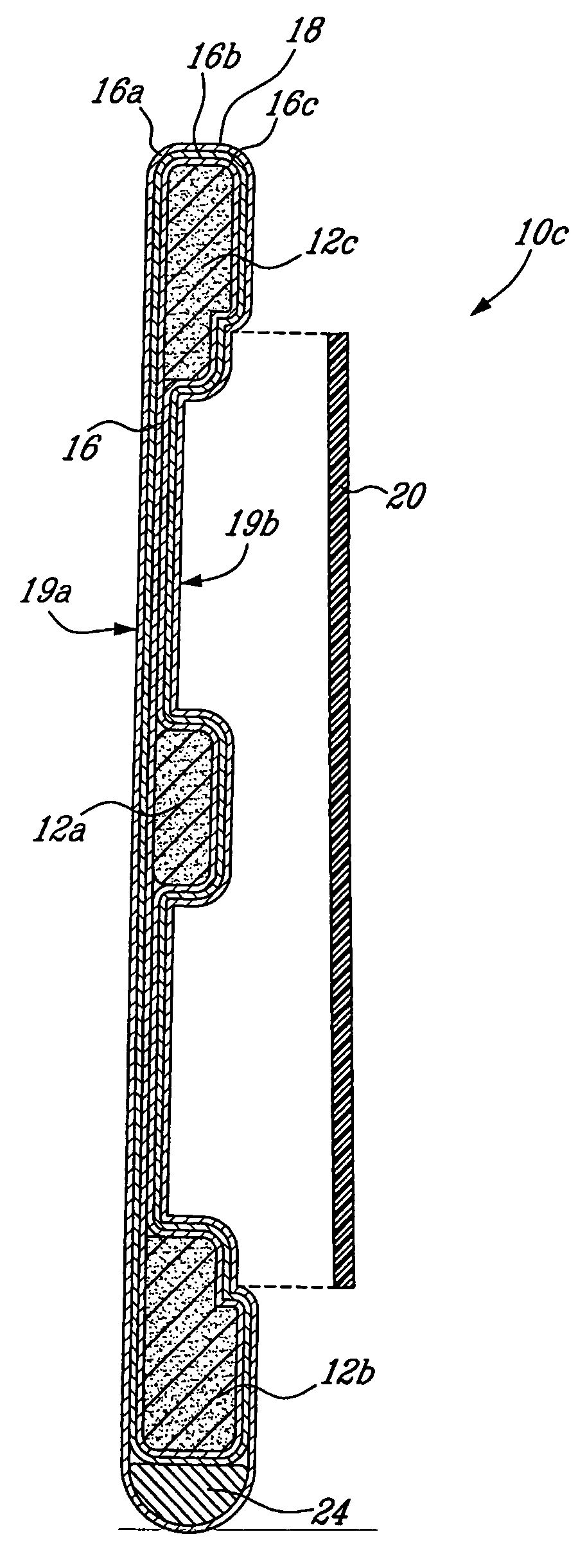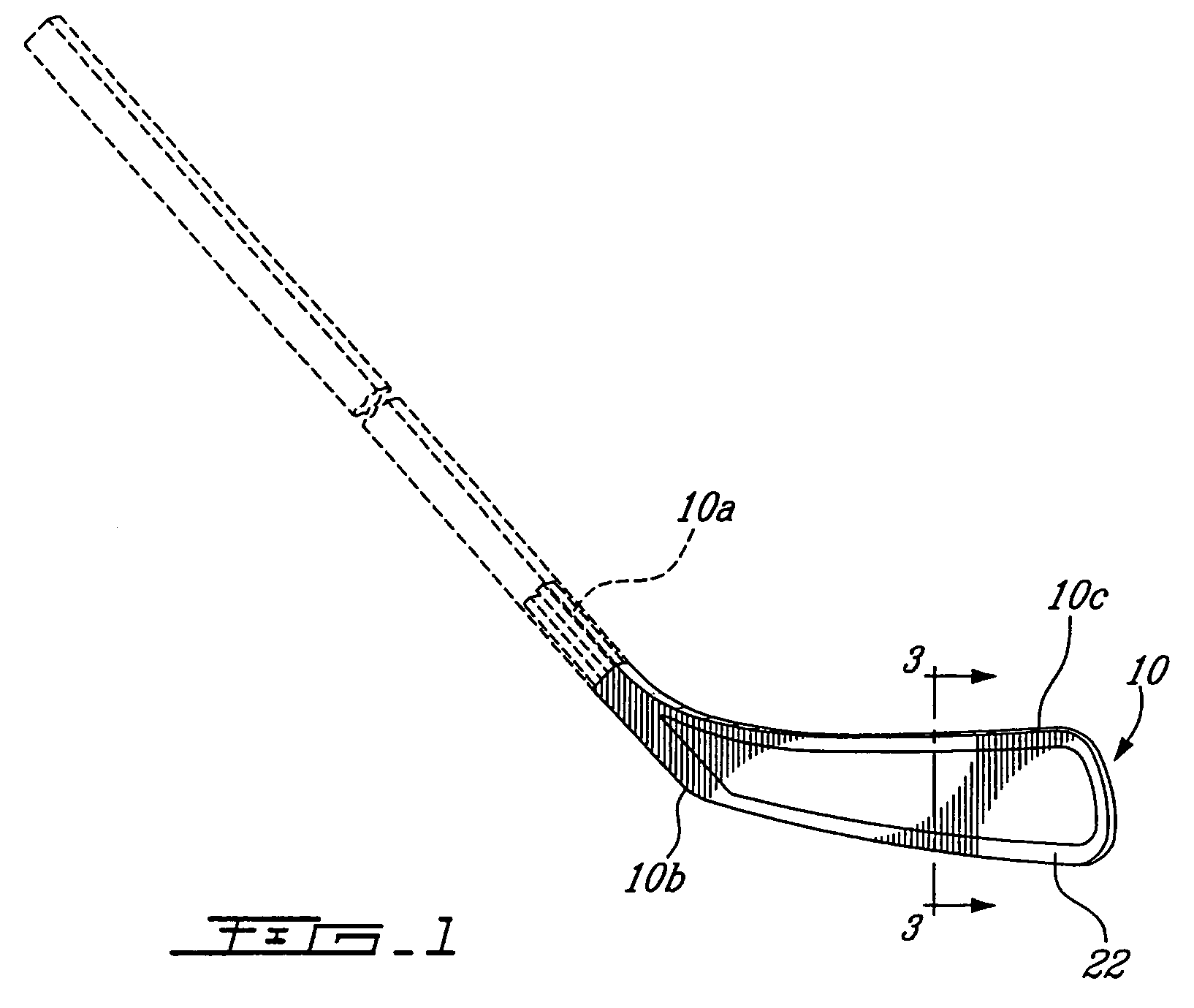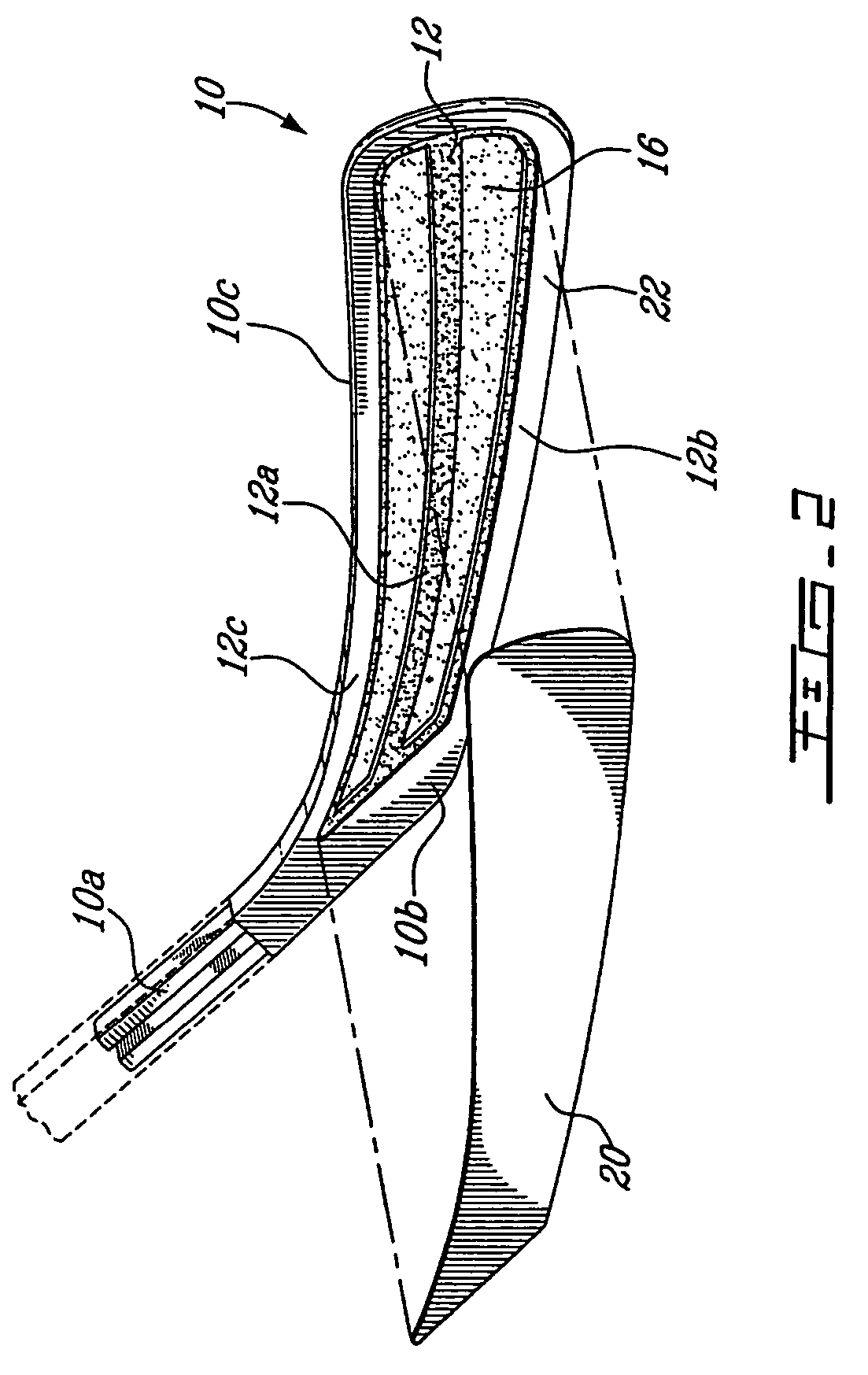Hockey stick blade and a method of making thereof
a technology of hockey stick and blade, which is applied in the field of hockey stick blade, can solve the problems of reducing the mechanical properties of the blade as a whole, unable to provide an optimized combination of minimum weight and maximum stiffness/strength, and reducing so as to reduce the importance of foam surface area, improve blade performance, and reduce the effect of energy loss
- Summary
- Abstract
- Description
- Claims
- Application Information
AI Technical Summary
Benefits of technology
Problems solved by technology
Method used
Image
Examples
Embodiment Construction
[0058]This present invention is concerned in providing a hockey stick blade 10 such as that illustrated in FIGS. 1 and 2 which is mounted to a hockey stick shaft 11. The blade 10 includes a shaft connecting portion 10a, a heel portion 10b and a puck contacting portion 10c.
[0059]As illustrated also in FIG. 3, the puck contracting portion 10c comprises a core 12 formed of light weight material, such as low-density foam or carbon, and a tubular fiber braid jacket 16.
[0060]In the present embodiments, the core 12 is formed of three longitudinal spaced-apart sections 12a, 12b, 12c, onto which the fiber braid jacket 16 has been pulled or slid. Core section 12a is located at about the middle of the blade while core sections 12b and 12 are respectively located at the bottom and at the top of the blade. Each section may have a selected width. A combined height of these three sections may represent about half the height of the blade 10 as a whole. However, the number of core sections 12 may b...
PUM
| Property | Measurement | Unit |
|---|---|---|
| weight | aaaaa | aaaaa |
| perimeter | aaaaa | aaaaa |
| density | aaaaa | aaaaa |
Abstract
Description
Claims
Application Information
 Login to View More
Login to View More - R&D
- Intellectual Property
- Life Sciences
- Materials
- Tech Scout
- Unparalleled Data Quality
- Higher Quality Content
- 60% Fewer Hallucinations
Browse by: Latest US Patents, China's latest patents, Technical Efficacy Thesaurus, Application Domain, Technology Topic, Popular Technical Reports.
© 2025 PatSnap. All rights reserved.Legal|Privacy policy|Modern Slavery Act Transparency Statement|Sitemap|About US| Contact US: help@patsnap.com



